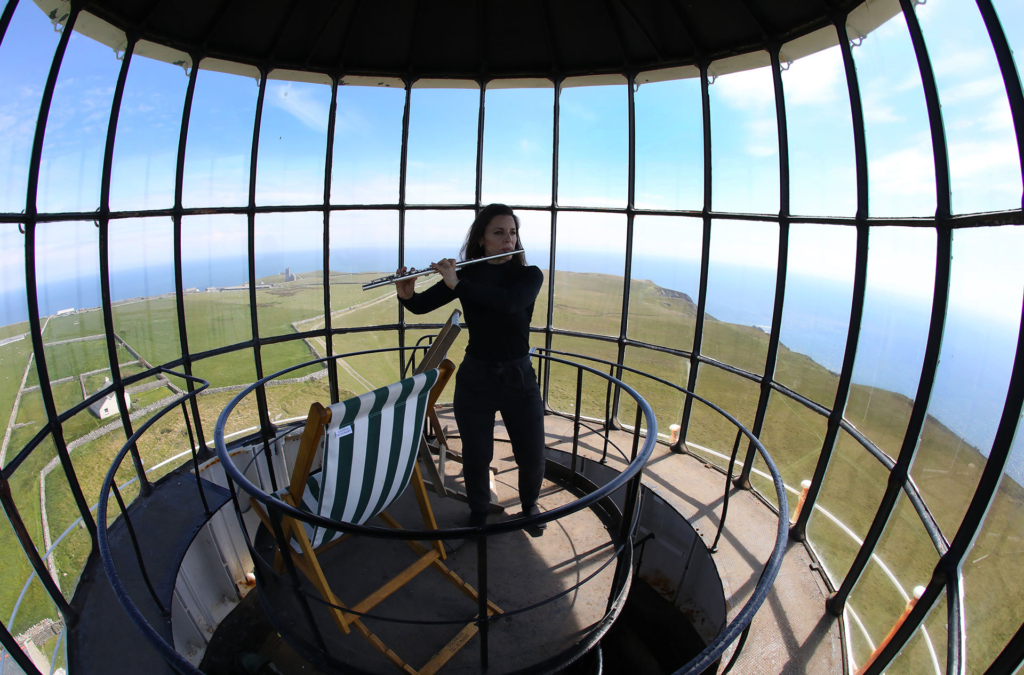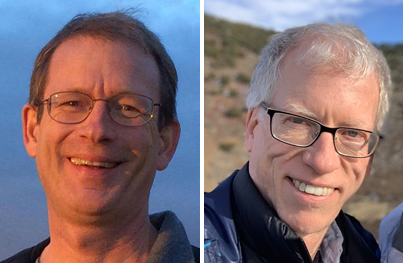A cloudspotters’ guide to climate change – “The moment you saw the calculations it was shocking, because until then, it was kind of a thought experiment”

By Mari Saito
25 July 2019
LUNDY ISLAND, ENGLAND (Reuters) – A path of trampled grass leads up the hill to St. Helen’s, the only church on Lundy Island. Near its doors, a stray lamb nibbles on tufts of tall weeds. From a Gothic tower topped with the English flag, the coastline of Devon is faintly visible to the east, while the expanse of the Atlantic Ocean stretches west, the seas uninterrupted all the way to North America.
Inside, a handful of visitors in windproof jackets lean forward on wooden benches to catch the Rev. Jane Skinner’s words.
“Majestic or wispy, solid yet ephemeral. Who could conceive of clouds?” Skinner asks, sturdy Teva sandals peeking out from underneath her white robes. “God has the whole spectrum in view, from the heavenly sphere to the atom, the clouds delivering dramatic forces of nature, shielding and obscuring light.”
As she speaks, workmen bustle about the nave setting up equipment for the days to come. It’s no easy task, hosting a group on an off-grid island powered by a generator that switches off at midnight, and where the internet signal goes down in overloaded circuits whenever someone uses electricity to make tea. […]
Tapio Schneider, a climate scientist at Caltech, decided to focus on Stratocumulus clouds in a small patch of subtropical oceans, running highly detailed calculations on supercomputers for several weeks.
In February, Schneider’s team published a paper saying Stratocumulus clouds in their model broke up into smaller Cumulus clouds and actually disappeared when carbon dioxide levels reached 1,200 parts per million (ppm), or levels that are three times higher than today.
“The moment you saw the calculations it was shocking, because until then, it was kind of a thought experiment,” Schneider says. “And then it started to feel a bit more real – that it actually could happen, which is scary.” Schneider is quick to point out, however, that there are still many uncertainties in the results and that it’s an extreme scenario that shouldn’t prompt immediate panic.

Other climate researchers have criticized the paper, saying the findings are based on a narrow patch of clouds and cannot be extrapolated to the entire globe.
“It’s not enough to run a model of a little box and get some of the small scales correct; all of the intermediate factors have a strong influence on how the cloudiness evolves, and that’s what’s missing from that paper,” says Bjorn Stevens, a director at the Max Planck Institute for Meteorology in Hamburg.
To Schneider’s own surprise, his paper generated a slew of grim headlines, adding to the near-daily feed of news articles about climate calamity. “Climate change kills off clouds,” read one headline. Another got even more apocalyptic: “Climate change is eliminating clouds. Without them, Earth burns.”
The California researchers posit that the dispersal of the Stratocumulus would add some 8 degrees Celsius to the Earth’s temperature, in addition to the 4 degrees of warming caused by greenhouse gas emissions alone. The last time the Earth experienced such conditions was some 50 million years ago, when crocodiles swam in the Arctic. [more]


